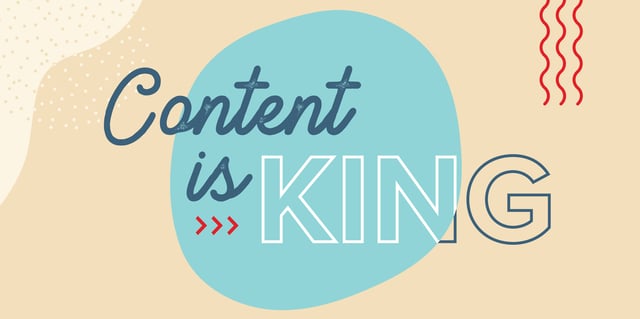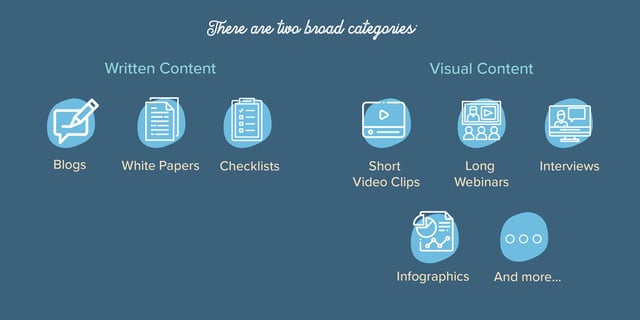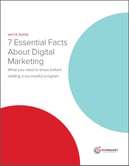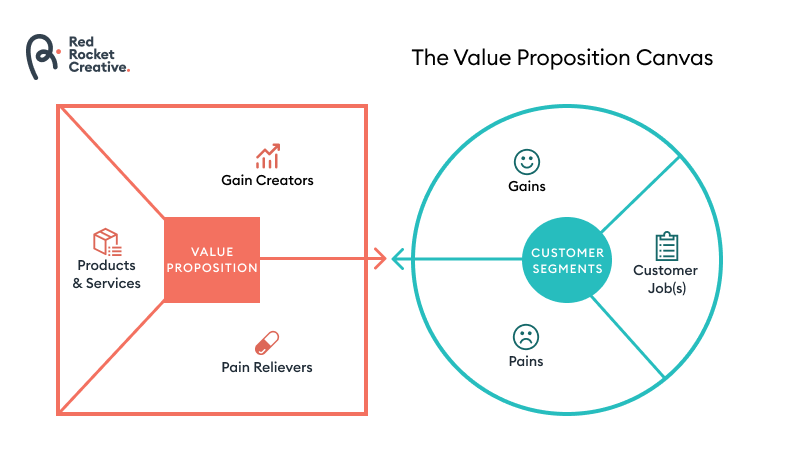If you read our recent blog on why content marketing can help your business, you’ll understand the dramatic impact of well-thought-out, structured content written for a specific audience. The questions you might ask yourself now is: “What kind of content should I be making and how can I ensure it reaches and entices my audience?”
Nobody sets out to create boring content. Yet, it gets churned out all the time. Why? What’s the difference between a blog, video, white paper, or webinar that gets thousands of views and one that tumbles through inboxes without so much as a second glance from the recipient?
In this blog, we’ll explore how you can create meaningful content that makes sense for your industry, your business, and engages your audience.
What Does Your Audience Want?
Your entire focus should be on creating content your audience craves. What are their problems? What keeps them up at night? How can your business address those issues?
The biggest obstacle to solving your audience’s problems is figuring out what their problems are, to begin with. A content strategy based on faulty assumptions will ultimately miss the mark. Before a single word gets written or a second of video gets recorded, you should have developed a strategy that covers the type of content you’ll be making and the reasons why.
If your business is already established in the industry, reach out to existing contacts and chat about what they’re struggling with, what they’re worried about going forward, what problems require solving, and what services and products will make their life easier.
If you’re looking to break into a new market and have no connections, one effective strategy is to use keyword planning to determine potential content ideas.
People search Google for solutions to their problems. I do it. You do it. Everyone does. Those search terms are recorded and tools such as Google’s Keyword Planner, SEM Rush, and Ahrefs allow you to see the search volume of any word, phrase, or question.
This keyword info is an invaluable resource. Your target audience doesn’t know you yet, so you have to introduce yourself. By building a content strategy around specific keywords, the blogs, videos, and white papers you make become so much easier to discover. If your audience is asking questions such as, “Are fuel cells the future of green transport?” and your blog ranks on the first page of Google and is titled, “Why fuel cells are the future of green transportation” there’s a strong chance they’ll read your content and become familiar with your business and your solution.
The Medium Matters
Once you’ve decided on a subject matter to create content about, your next decision is how you’ll present the information.
There are two broad categories: written content and visual content. Written content includes things like blogs, white papers, and checklists. Visual content involves short video clips, long webinars, interviews, infographics, and more.
Start with short content. White papers, webinars, and other long-form content are serious time investments. Your audience needs to be confident that you will provide valuable information worth their time before they’ll even consider checking it out.
Keep your blogs between 700-1000 words. Use headers and leave lots of white space on the page. And don’t forget to bold the important parts. This makes your content easy to skim. If you’re creating visual content, start with infographics and videos that are three minutes or less.
Host them on your website and distribute them through social media and emails. How you distribute your content is an essential part of building an audience. The strategy is too much to cover in this blog, but to be succinct, every piece of content you create should invite your audience to subscribe to your newsletter, follow your social channels, and further engage with your content.
The objective is to lower the barrier of entry to consuming your content. Get your audience familiar with the idea that your business has the solutions to their problems. Become a reliable source of information. Once you’ve established that connection, you can begin creating longer-form content.
The Tone Matters, Too
By this point in the blog, you should have an understanding of the type of content you are going to create and whether it will be written or visual (the best marketing strategies incorporate a mix of both). The last thing you need to decide is how you’re going to convey your message. The words and tone. Your style.
Some businesses prefer to be formal in their communications. They leave humour at the door and prefer crisp sentences. Others want a more casual tone, they’ll include jokes and tangents in their content to lighten the mood.
There’s no simple rule when it comes to choosing your tone. It’s a combination of your brand, your product, and what’s appropriate for your industry and audience. A useful exercise can be a voice, tone, and style workshop, in which you and other key partners answer a series of questions about how you want your business to communicate. Some questions may include:
- Funny or serious?
- Formal or informal tone of voice?
These are the sort of considerations that ultimately decide how you’ll speak on camera and write your blogs. Having discussions about tone in the beginning helps prevent different writers from creating content that doesn’t go together, with some content being light-hearted and others being serious.
Final Thoughts
Creating content that succinctly addresses your audience’s problems is no easy feat. It requires careful planning in advance and constant monitoring throughout. By taking the time to research your audience’s pain points, understand which mediums work best for the content you want to create, and the tone that suits your business and goals, you’ll be on your way to establishing yourself as an authority in your field.
Gabriel Scorgie
Gabriel creates compelling content and campaigns designed to appeal to customers. A business needs an audience. He’ll get you that audience.








